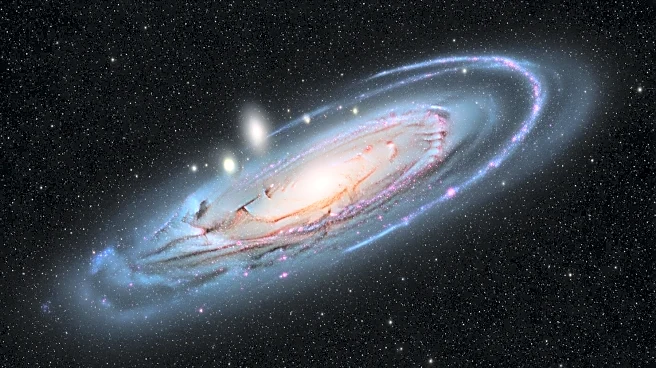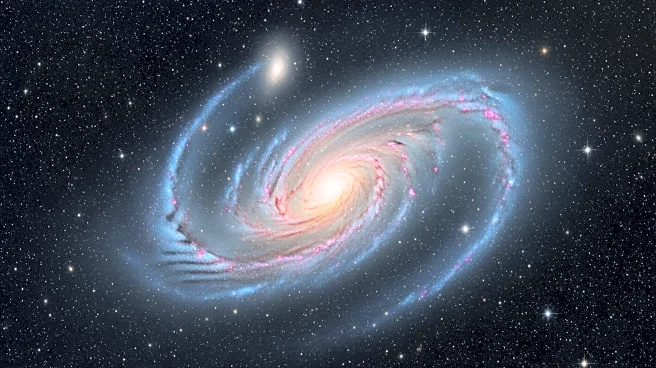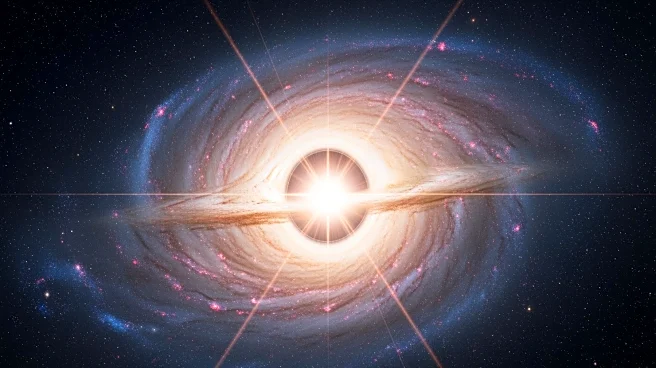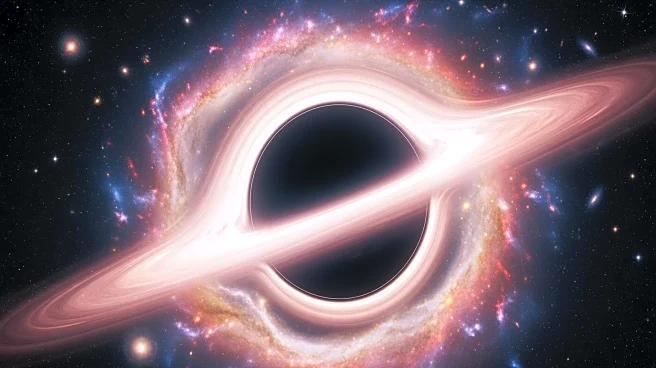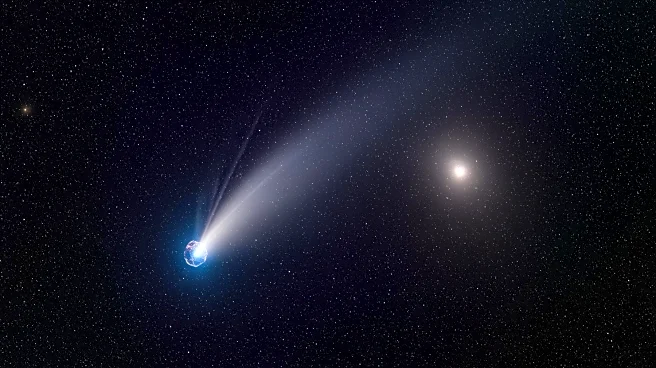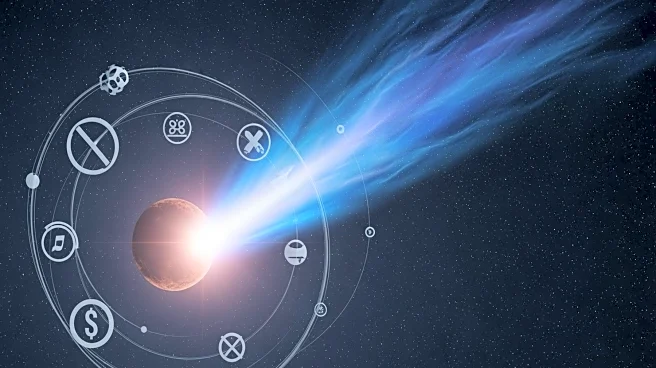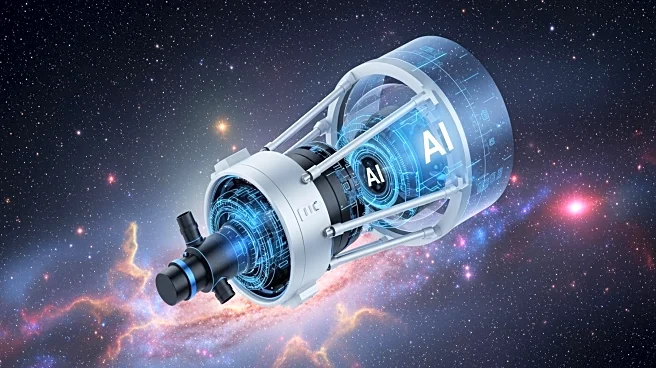What's Happening?
The Vera C. Rubin Observatory has revealed a previously unnoticed stellar stream extending from the galaxy Messier 61, indicating that the galaxy may have torn apart a smaller galaxy in the past. This
discovery was made through the observatory's first test image, even before its official scientific survey has commenced. Messier 61, located in the Virgo Cluster, is known for its high rate of star formation and has been the subject of extensive study by major telescopes like the James Webb Space Telescope and the Hubble Space Telescope. Despite these efforts, the stellar stream had not been detected until now, marking a significant milestone for the observatory.
Why It's Important?
The discovery of the stellar stream in Messier 61 is significant as it provides new insights into the galaxy's history and the dynamics of galactic interactions. This finding could lead to a better understanding of how galaxies evolve and interact over time. The Vera C. Rubin Observatory's ability to detect such features highlights its potential to transform astronomy by uncovering hidden aspects of cosmic structures. This could have implications for the study of dark matter and the overall structure of the universe, benefiting researchers and scientists in the field of astrophysics.
What's Next?
As the Vera C. Rubin Observatory continues its operations, it is expected to uncover more features like the stellar stream in Messier 61. The observatory's future surveys will likely provide further insights into the history and evolution of galaxies, potentially leading to new theories and models in astrophysics. Researchers anticipate that the observatory will play a crucial role in advancing our understanding of the universe, with more discoveries expected as its capabilities are fully utilized.
Beyond the Headlines
The detection of the stellar stream in Messier 61 may prompt a reevaluation of previous studies on the galaxy, as well as other galaxies with similar characteristics. This could lead to a broader reassessment of galactic formation theories and the role of smaller galaxies in shaping larger ones. The ethical dimension of scientific discovery is also highlighted, as researchers must consider the implications of new findings on existing knowledge and theories.
